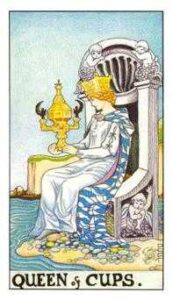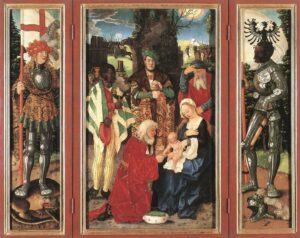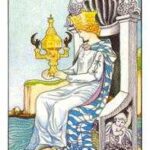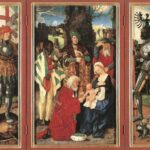![images[5]](http://jeanraffa.files.wordpress.com/2011/11/images52.jpg)
Although the symbol of the eye was later appropriated by male gods, originally it spoke to qualities of the Great Mother Goddess. Foremost among these was wisdom. Author Merlin Stone translates this ancient hymn to Ua Zit, the Cobra Goddess of pre-dynastic Egypt: “Uniting with Her sister Nekhebt, to create the power of all Egypt…Ua Zit emerged from holy forehead as the Third Eye, the Eye of Wisdom.”
The following passage comes from The Wisdom of Solomon in the Apocrypha of the New English Bible and dates about 900 B.C. It refers to Hokhma, the Hebrew feminine word meaning wisdom. Like Shekhinah, (Judaism’s feminine “divine presence of God”), Hokhma is associated with light, another feminine quality.
“Wisdom is the Holy Spirit. She is one and yet She is many…She permeates all with her ethereal essence…She is the brightness that comes forth from the eternal light, and…it is She who continually renews all, as Her power spans the universe and Her kindly orders are always fulfilled…”
The Egyptian Maat, whose name was based on the verb “to see,” was the original All-Seeing Eye and Mother of Truth. In The Woman’s Dictionary of Symbols and Sacred Objects, Barbara Walker says that the Sumerian Eye Goddess also represented the spirit of truth and law. “Hers were the All-Seeing Eyes from which no crime could be hidden.” Likewise, Sulis, the name for the Gaelic Sun Goddess, came from suil, an eye. And according to the Hindus, the Great Goddess “created and destroyed universes just by opening or closing her eyes.”
The Greek philosopher Plotinus also associated the eye with wisdom and light, reasoning that the eye would not be able to see the sun if it were not itself a kind of sun. Since the sun is the source of light, and light symbolizes the intelligence and the spirit, the process of seeing represents the spiritual act of understanding. The Herder Symbol Dictionary agrees, adding that since two eyes convey physical normality and its spiritual equivalent, the third eye is symbolic of the superhuman or divine. Because it is closely associated with light and spirit, the third eye “symbolizes spiritual and mental perception, but it is also — as the ‘mirror’ of the soul — the organ of spiritual and mental expression.”
Psychologically, the activation of the third eye means that we are perceiving and expressing the enlightened presence and wisdom of God the Mother, the feminine half of the Self whose specialty is right-brained mythos — the subjective inner wisdom of symbols, images, imagination, instinct, an understanding heart, intuition and meaning. When her worship was banished by patriarchal religions her mythos way of perceiving was replaced by the masculine God’s logos: objective linear thinking and judging with logic, words, theories and creeds. Unfortunately, this religious one-sidedness has created an unholy imbalance in human affairs, both sacred and secular.
But there is hope. Through the centuries the symbol of the third eye has reminded all who care to see that opening our eyes and minds to God the Mother’s presence within us and the world can connect us to the fullest wisdom available to human beings.




0 Responses
You are a gift to the world.
That is an extraordinarily kind thing to say, Victor. Thank you with all my heart.
In South Asian cultures, the third eye of wisdom is still prominently displayed. The most commonly seen is the bindi, which Hindu women (and some others) use as decoration: http://en.wikipedia.org/wiki/Bindi_(decoration). It is also very auspicious for men and women of whatever faith to be adorned with a tilak (also tilaka or tika) during ceremonies, particularly in India, though I’ve been so blessed on many occasions even in the USA: http://en.wikipedia.org/wiki/Tilaka. Hindus are typically much more accepting of their “gods” being metaphors for archetypal concepts. Their prayers “to” a deity tend to be more a calling upon that part of their psyche to give them the wisdom that resides in that archetype (although they may not describe it that way). For me, it is quite interesting to see how broadly this concept was practiced across many diverse cultures in the pre-Christian era; and how it survives in some. There is hope!
Hi Skip,
I’ve occasionally worn a bindi myself while in India. There’s something about it that makes you a bit more aware of your thoughts and behavior. It’s a lovely custom I fully embrace.
I love HInduism too, and so admire the way its practitioners bring their god-images right out into the open where they can see and interact with them. Yes, the gods are images of our archetypal inheritance and knowing this brings great psychological and spiritual wisdom and healing. There is, indeed hope!
Thank you for stopping by.
Jeanie